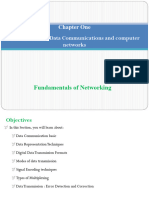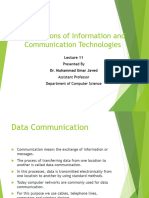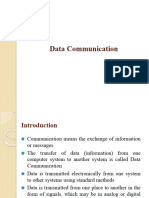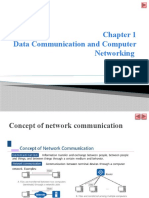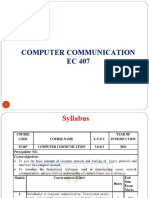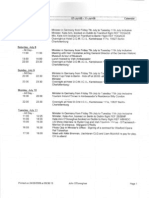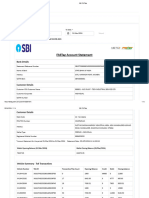0% found this document useful (0 votes)
26 views25 pagesCH1 Intro
A network connects devices like computers and printers through communication links. Nodes in a network can send and receive data from other nodes. Common network types include local area networks within an office or building, metropolitan area networks spanning a city, and wide area networks that connect locations worldwide. Networks provide advantages like sharing hardware, data, internet access, and entertainment, but also have costs for hardware, software, administration and security concerns.
Uploaded by
Asaram JanwaleCopyright
© © All Rights Reserved
We take content rights seriously. If you suspect this is your content, claim it here.
Available Formats
Download as PDF, TXT or read online on Scribd
0% found this document useful (0 votes)
26 views25 pagesCH1 Intro
A network connects devices like computers and printers through communication links. Nodes in a network can send and receive data from other nodes. Common network types include local area networks within an office or building, metropolitan area networks spanning a city, and wide area networks that connect locations worldwide. Networks provide advantages like sharing hardware, data, internet access, and entertainment, but also have costs for hardware, software, administration and security concerns.
Uploaded by
Asaram JanwaleCopyright
© © All Rights Reserved
We take content rights seriously. If you suspect this is your content, claim it here.
Available Formats
Download as PDF, TXT or read online on Scribd
/ 25



